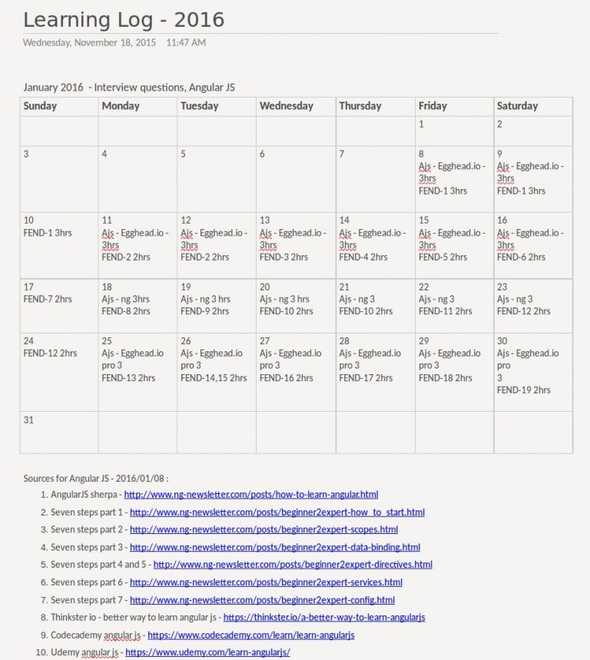The learning calendar – Or what works to keep me accountable and learning on a daily basis – Part 2
In Part 1, we decided that we believe in continually, incrementally, steadily learning – an hour a day every day. We figured out when in our day we are going to make room for this hour of learning in a way that doesn’t add too much stress to our life and makes it highly achievable. And we set a daily schedule for this hour of everyday learning.
So the next question is what should we be learning?
Part 2: The What
If you have actually read this far, then the chances are high that, like me, you have a bunch of stuff you want to learn. And the topics are probably disparate.
There are some topics which feel urgent but not so interesting. And some are so interesting, you don’t care how important they are – you just want to learn. Some of them have a time limit and some of them don’t. Some of them provide immediate gratification and some don’t. So which one to pick? What do I learn first.
Actually, you can pick up whichever one and keep at it. What is important is to not do one thing today and another tomorrow and just keep ping-ponging between topics. But for most of us, this is hard and some kind of priority order helps.
For this, I find my learning calendar very useful. Here are the steps to make your learning calendar.
- Make a list of all the topics you want to learn
- Next the fun step – the research! Give yourself a couple of days and enjoy this research / browsing to your heart’s content step
- Per topic make a list of all the resources you intend to learn from
- If these are websites, then list all of them
- If they are books, list them and figure out which chapters in what order you will learn from
- Then arrange these resources list in the order of learning
- Then guesstimate how long (in hours) each resource is going to take
- Now arrange the topics in a priority order. And sum up the total number of hours you estimated you will need per topic (add up the individual resource hours per topic)
- Now you know how long you will take per topic. Add 25% to the number. Why 25%? Well, in the real world you will not be learning at 100% capacity every single day. Also, we have just guesstimated the time and we are susceptible to the Planning Fallacy.
- Open up your logger application – I use OneNote and open the calendar view – or make a calendar – or use your calendar application or Trello or whatever. The key is to be able to see the entire month in your view, preferably, the next month as well.
- Now fill in each day with the topic, the link/book/chapter you will be studying. If you plan to study for more than the requisite hour, the type in the hour estimate. Go on till you fill up two months or finish up all your topics and hour allotments. Add the buffer time at the end of each topic period.
Now when you the time comes for you study everyday, you know exactly what to study, to learn and what is your estimate. There is no dilly-dallying, no lolly-gagging, no doing ‘research’ on what you need to study today… basically you’ve put yourself in a spot where you have no legitimate busy-making excuses on not studying.
As you study, when links, other topics come up, make note of these alongside your calendar. The days you don’t study mark it in your calendar, if you take more time or less time write this down as well.
And so, you now have a plan, a track record as well as a progress record of your learning and you waste no time everyday with – “should I be learning this”.
Of course, as you learn, some links you realize are useless. So you can just note that down and move on or replace them with the same-topic additional link you found. You can also take the time once a week or twice a month to adjust your calendar to add the new links / topics you have found, remove irrelevant ones for the future, add on to more months.
And make notes and use Anki when you are learning (you can google why).
The downside to this method – the initial research and planning takes a few hours, maybe a couple of days – but in the end will save you multiples of the hours you spent. And will keep you motivated to learn everyday.

April 28, 2016